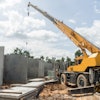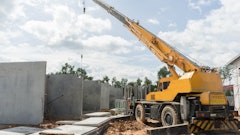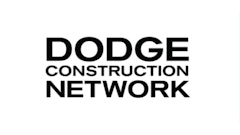
The 2026 Building the Future report, based on a survey of more than 1,000 AEC professionals globally, reveals that while 95% of early AI adopters use the technology frequently across building lifecycles, broader industry adoption remains uneven due to data security concerns and skills gaps.
"AI in construction is still emerging, yet the momentum among early adopters is accelerating rapidly delivering tangible gains in cost, time and collaboration," said Usman Shuja, CEO of Bluebeam. "The question now isn't whether AI works – it's how to integrate it effectively."
The report highlights several barriers preventing wider AI adoption. Data security and privacy concerns top the list, followed by integration challenges with existing systems. Additionally, 19% of companies cite lack of digital skills and 23% mention difficulty keeping pace with rapidly changing technology as major obstacles.
Despite proven benefits, two-thirds of surveyed companies invest less than 10% of their technology budgets on training, potentially limiting their ability to capitalize on AI capabilities.
Beyond AI implementation, the report reveals broader technology adoption challenges across the construction industry. Nearly 40% of firms report difficulty managing collaboration across full project lifecycles, particularly when teams operate in silos between design, construction and operations phases.
The workforce implications are significant. Technology is increasingly viewed not just as a productivity driver but as a critical tool for addressing labor shortages and improving recruitment and retention in an industry facing persistent workforce challenges.
"Success requires not just tools but training and an integrated approach that connects the dots across teams, project phases and workflows," Shuja added, emphasizing the need for workers who combine construction expertise with digital fluency.
The findings suggest that while AI adoption in construction remains in early stages, companies that successfully integrate the technology are seeing measurable benefits in project efficiency and collaboration.


















